Africa is home to some of the most fierce and amazing animals in the world. However, many people don’t realize that Africa is also home to many unique horse breeds.
Several horse breeds were developed in Africa, some of which are extinct now. We are sharing 15 of the most unique and beautiful native African horse breeds.
Common African horse breeds are breeds include the Barb, Nooitgedachter, Boerperd, Vlaamperd, Fleuve, Dongola, Poney du Logone, Western Sudan Pony, Abyssinian, Namib, M’bayar, Basotho, Fouta, Tawleed and Bhirum.
Here are fifteen native African horse breeds.
1. Barb
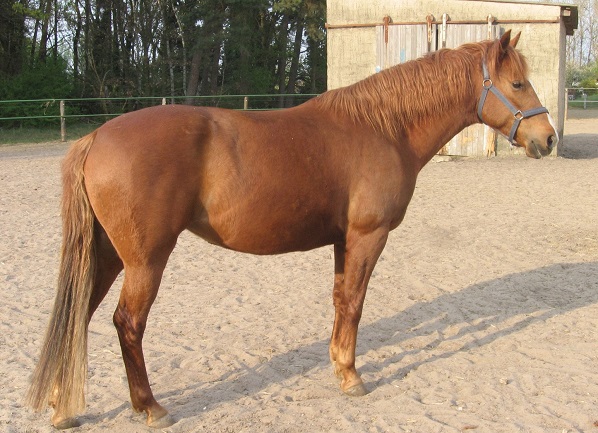
The Barb originates in North Africa and is one of the most popular African breeds. Though their exact origins are unclear, there are mentions of them in the second century, and by the eighth century, they were quite common.
The Barb is closely related to the Arabian breed, though they are less refined. There is much debate about whether the Barb and Arabian share a common ancestor or if the Arabian is a predecessor to the Barb.
The Barb has heavily influenced many other horse breeds such as the Andalusian, Criollo, Thoroughbred, Lustanio, and Akhal-Teke.
Barb horses are on average 14.2 to 15.2 hands tall with a well-muscled body, arched neck, and fine legs. They are commonly gray, black, bay, brown, or chestnut. Thanks to their incredible stamina, Barb horses excel at endurance riding, along with dressage, jumping, and pleasure riding.
2. Nooitgedachter
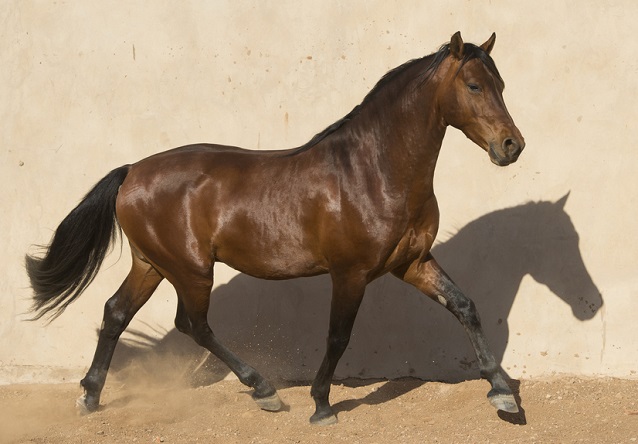
jacotakepics / Shutterstock.com
The Nooitgedachter origintaes from South Africa. The breed is a descendant of the original Cape horse and the Basuto pony.
The breed began from the Basutho Pony Project in 1951, and because of previous inbreeding, carefully selected breeding was required. This project then resulted in the creation of the Nooitgedachter breed. They are a rare breed, with only around 400 Nooitgedachter horses.
Nooitgedachter horses have a sturdy, compact build with excellent stamina and rideability. They stand around 13.2 to 15 hands tall and are generally bay, chestnut, or blue roan. Thanks to their athleticism, they excel at jumping and eventing.
3. Boerperd
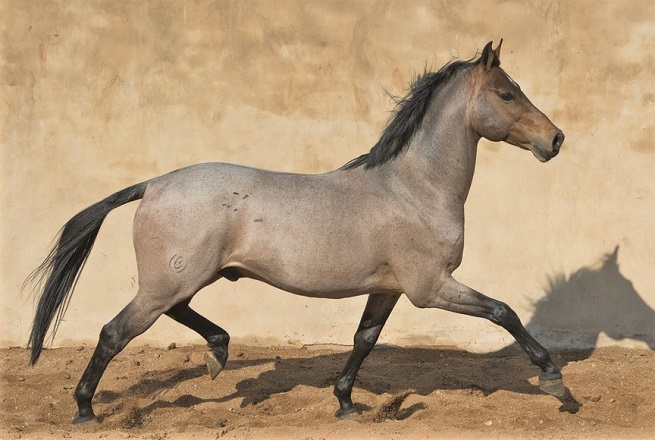
jacotakepics / Shutterstock.com
Native to South Africa, many believe that the Boerperd traces back to the original Cape horse or the ancient Boer horse. The Kaapse Boerperd Breeders’ Society of South Africa was formed in 1948, and then a separate association, the Boerperd Society of South Africa, was formed in 1973.
The history of the Boerperd is divided into two phases. From 1652 to 1836, the first phase consisted of the breeding of Barb-Arabian crosses from Java bred with Andalusian and Persian Arabian horses.
Also Read: 10 Interesting Facts About Andalusian Horses.
From 1836 to 1899, the second phase saw the Cape Horse bred to Flemish stallions, along with Hackneys, Norfolk Trotters, and Cleveland Bays.
Boerperd horses have elegant yet muscular builds with strong, well-arched necks and strong legs. They stand around 14 to 16 hands tall and come in many different colors. This versatile breed excels in saddle seat, hunt seat, dressage, western, and eventing, with some Boerperd horses even being gaited.
4. Vlaamperd
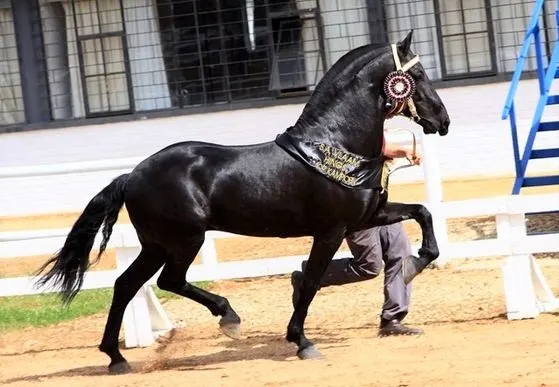
The Vlaamperd is another breed native to South Africa. Their name translates to “Flemish horses” due to their strong Friesian influence.
The breed traces back to the 19th from the now-extinct Hantam horse. They were crossed with other breeds, including the Friesian, Hackney, Cleveland Bay, Cape Harness, and Oldenburg. These elegant horses are a rare breed, with only a few hundred horses.
Vlaamperd horses have a muscular yet elegant appearance with a well-arched neck and refined head. They stand around 14.2 to 15.2 hands tall, and due to their Friesian heritage, they are primarily black. These graceful and versatile horses make ideal mounts for saddle seat, dressage, hunt seat, and driving.
5. Fleuve

The Fleuve horse originates in Senegal, and their name in French means “big river.” Though not much is known about their history, they are descendants of Barb horses and local pony breeds.
Fleuve horses are an essential part of life in Senegal and are popular for racing, polo, dressage, and jumping. They are athletic horses with a slender build and a fine head. Fleuve horses stand around 14 to 15 hands tall and are typically bay, gray, or chestnut.
6. Dongola

The Dongola, or Dongolawi, is a horse breed native to Sudan, Cameroon, and Eritrea. They owe their origins to Iberian horses imported to Egypt in the 13th century, along with Barbs and Arabians.
Though they were once a common breed, even being imported to Ireland and Germany, they are not as numerous now. Several regional variants of the Dongola breed throughout Africa, including the West African Dongola, Bahr-el-Ghazal, Bornu, and Haoussa.
They have a convex profile and light yet robust build, and reliable riding mounts. Dongola horses stand around 15 hands tall and are typically bay, chestnut, or black.
7. Poney du Logone
The Poney du Logone originates from along the Logone River in Chad and Cameroon. They are particularly popular with the Moussey people.
The Poney du Logone traces back over 100 years and originates from Barb horses. They are a common choice for transportation and general riding among locals. Poney du Logones stand around 12 hands tall and are generally bay, roan, chestnut, or gray. They have a slightly convex profile with strong legs and a strong neck.
8. Western Sudan Pony
The Western Sudan pony, also called the Darfur pony, Gharkawi, or Kordofani. They can be found throughout Sudan and South Sudan, particularly southern Darfur and southwestern Kordofan in Sudan.
Not much is available about the history of the Western Sudan pony. They are typically bay, chestnut, or gray and also often exhibit white markings.
9. Abyssinian
The Abyssinian is a horse breed native to the northern part of Ethiopia. They are a common breed for agriculture and transportation in Ethiopia and other African countries as well.
In 1861, Abyssinian horses were brought to Great Britain and then later to America. This hardy breed works well under hot, harsh conditions. They are a light breed, often displaying a swayback, standing around 13 to 14 hands tall and coming in various colors.
10. Namib Desert Horse

Hannes Vos / Shutterstock.com
The Namib Desert Horse is a feral horse breed that lives in the Namib Desert of Namibia. They are the only feral horses that are located in Africa.
Though the origins of the Namib Desert Horse are relatively unknown, many believe that they are descendants of German riding and also cavalry horses that escaped during WWI.
Included in our list of unusual horse breeds, Namib Desert horses are very hardy and have adapted to the harsh desert climate. There are currently around 90 to 150 Namib Desert Horses roaming in the wild.
The Namib Desert Horses have a light, athletic breed, similar to European sport horses, with influence from Trakehner, Shagya Arabian, and Hackney bloodlines. Some horses even exhibit dorsal stripes, and they are often bay or chestnut in color.
Also Read: 6 Types of Purebred Arabian Horses.
11. M’bayar
The M’bayar is a small breed of horse native to Senegal. Experts believe that the breed is a descendant of the Barb.
The M’bayar is closely related to the Fouta and Fleuve breeds. They are small, stocky horses with short necks and are one of the most popular breeds in Africa. Popular for general riding and driving, they are on average 13 to 14 hands tall and are often chestnut.
12. Basotho

U. Eisenlohr / Shutterstock.com
The Basotho or Basuto pony is a breed originally from Lesotho and South Africa. They originate from horses imported by the Dutch in the 1600s.
The introduction of Arabian and Persian blood helped to improve the stock. Due to their hardy nature and long strides, they are popular for general riding and vacation expeditions through mountainous regions of Africa.
Basotho ponies are on average 15 hands in height, have long necks, muscular bodies, and deep chests, coming in many different colors.
13. Fouta

The Fouta or Foutanké originates from Senegal and comes from crossing the Fleuve and M’Bayar breeds. They are a popular breed for working, driving, riding, and also racing.
Fouta horses have a light build, with similar conformation to Fleuve and M’Bayar horses. They are often bay and chestnut, standing around 13.2 to 15 hands tall. They are adaptable horses, noted with their willingness to work.
14. Tawleed
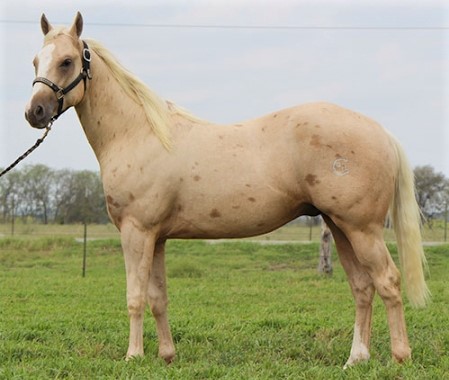
The Tawleed horse comes from Sudan, native to the Khartoum region. They are common among indigenous dwellers in mountainous areas.
Talweed horses come from crossing native ponies with Thoroughbreds and exotic horse breeds. These durable horses are popular for riding, as they do well in tough, rocky terrains and hot climates. They have a sturdy frame with a muscular body.
15. Bhirum
The Bhirum, or Nigeran pony, is native to the northern regions of Nigeria. Many experts believe they are descendants of the Poney Mousseye and Barb.
Bhirums are large ponies that are sometimes bred with donkeys and zebras. With good stamina and endurance, they can thrive in hot climates. They have a compact body with a deep chest and short neck, standing around 14 to 14.2 hands tall and coming in various colors.
Source: horseyhooves.com








